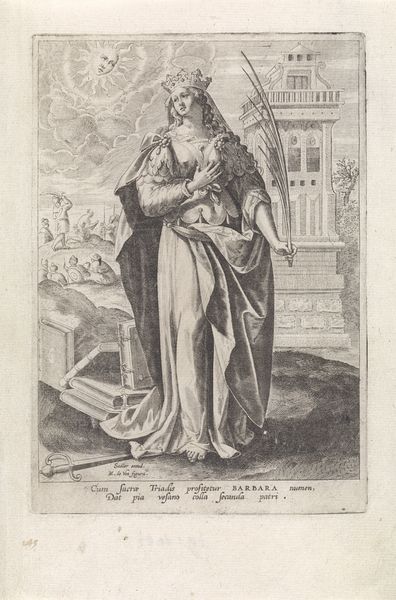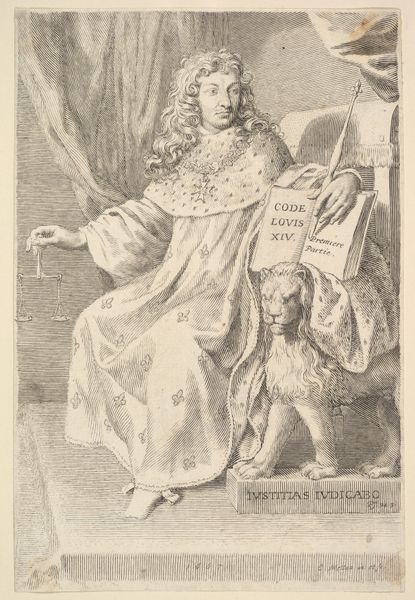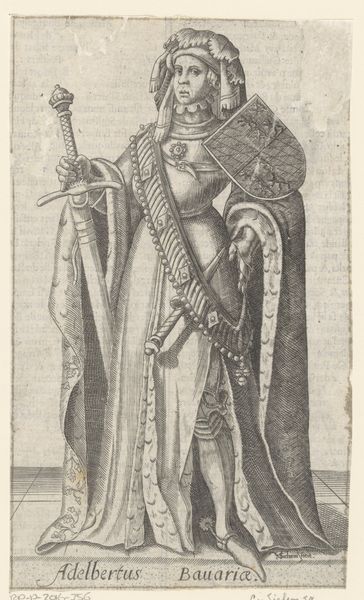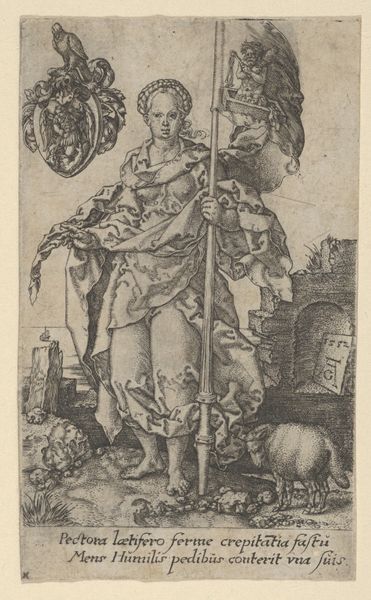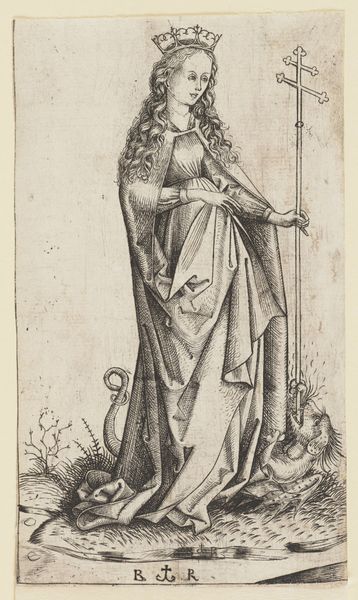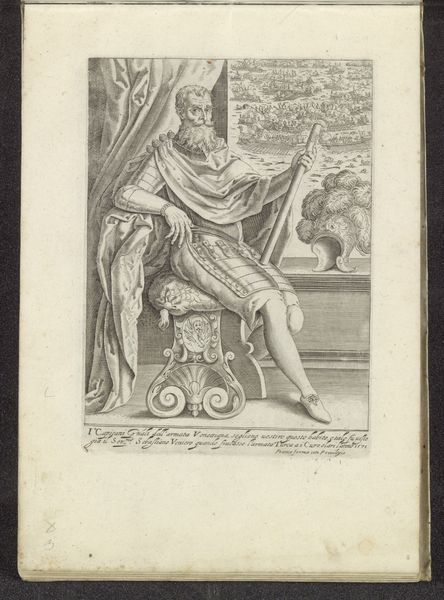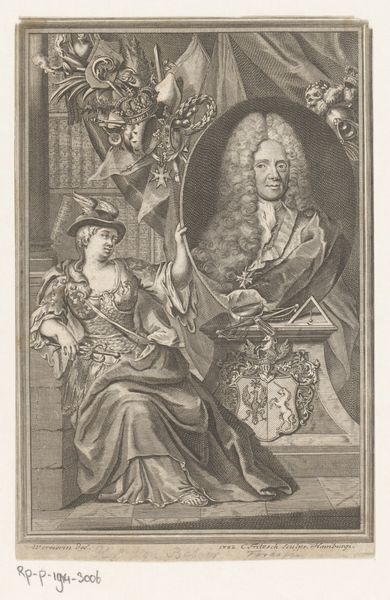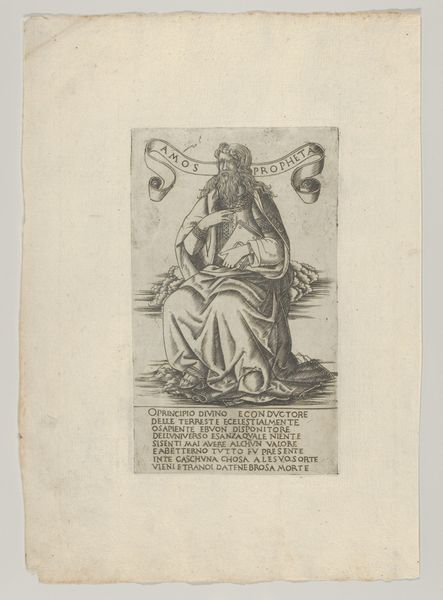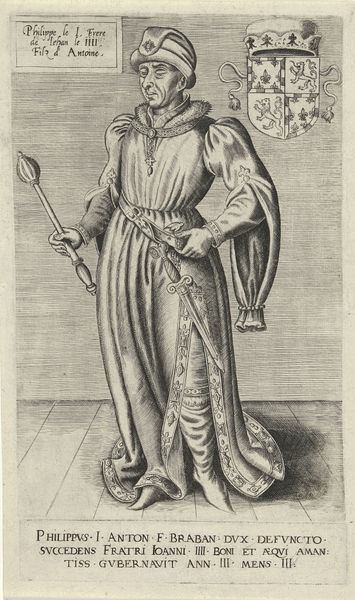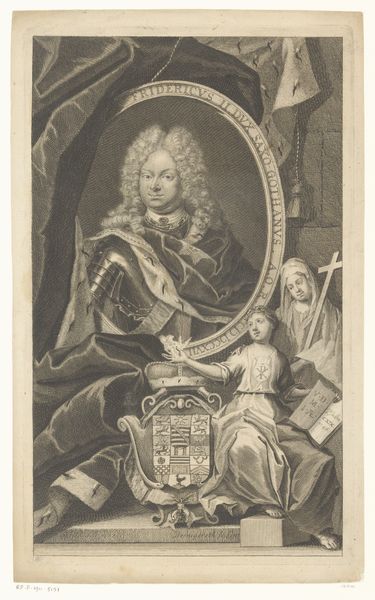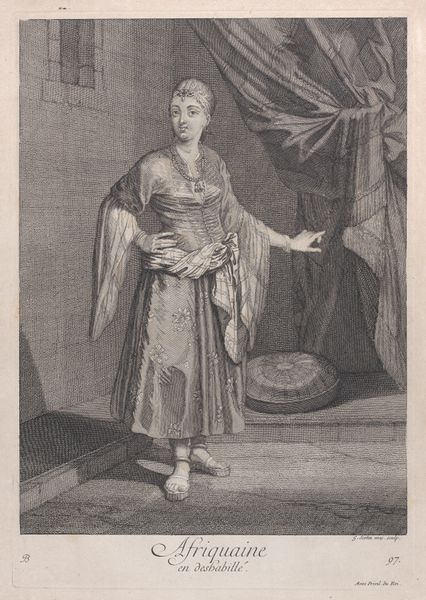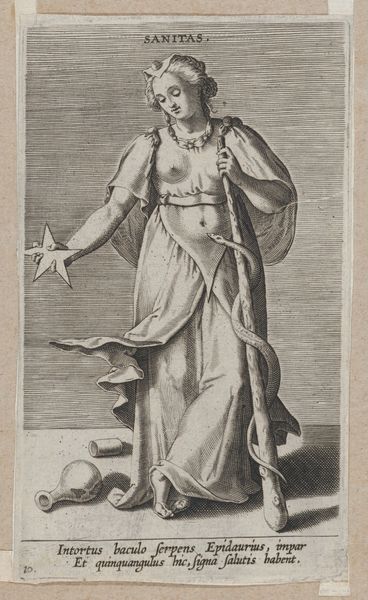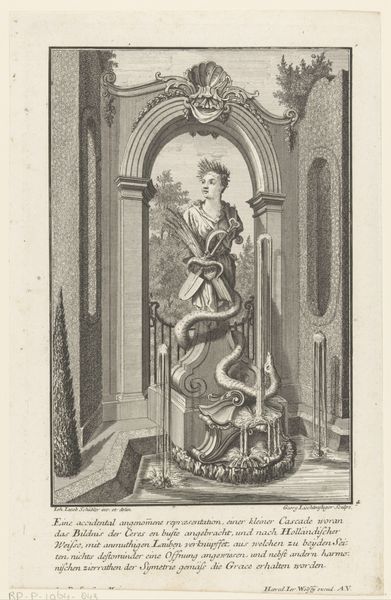
His Royal Highness James Duke of Yorke and Albany, Knight of the most noble order of the Garter, and sole brother to his sacred Majesty King CHarles the 2d 1680 - 1685
0:00
0:00
print, engraving
#
portrait
#
baroque
# print
#
history-painting
#
engraving
Dimensions: Sheet: 10 5/8 × 7 1/2 in. (27 × 19 cm)
Copyright: Public Domain
Curator: Here we have an engraving titled "His Royal Highness James Duke of Yorke and Albany…", dating roughly from 1680 to 1685. It's part of the collection at the Metropolitan Museum of Art. The portrait commemorates James, the Duke of York, brother to King Charles II. Editor: Oh, the pomposity practically leaps off the page! He's got that slightly vacant royal stare, draped in more fabric than seems strictly necessary, I imagine what his tailor's bill must have been... Curator: Precisely! The materials matter. As an engraving, it suggests mass production, and therefore accessibility to a broader, though still elite, audience. These images were about projecting power and solidifying social standing through printed reproductions. Look at the heraldry and symbols—all reinforcing the Duke's lineage and authority. The engraving process allowed for meticulous detail. Editor: It's undeniably impressive craftsmanship. I'm captivated by the rendering of the lace, those luxurious, improbable curls. And yet, all that meticulous work seems in service to a rather… chilly effect. He feels distant, a figure to be admired, feared even, rather than someone to connect with. Curator: I’d say that's precisely the point of such commissions at the time! While ostensibly depicting an individual, these were exercises in crafting ideology, carefully constructed for political consumption, reproduced on paper to cement his image throughout society. Think about the engraver too, their workshop and techniques, as crucial parts of this whole spectacle. Editor: Fair point. And I’m now also thinking about how fragile something like a print on paper can be, versus all the weight of royal history it's attempting to carry. Curator: Exactly, these prints acted as documents, evidencing the power dynamics of the time. How such images impacted daily life then, and our readings of them now, opens fascinating areas to explore about production, and society in seventeenth century Britain. Editor: Mmm. Makes you ponder about image creation today, too. All that digital polish striving for the same god-like remove… but rendered virtually instead of physically labored over by skilled tradespeople. Curator: Indeed, food for thought. I've found revisiting it through the lens of production helps reframe the Duke, not as an individual but as part of a broader framework. Editor: I’m left with a newfound appreciation for the work that goes into maintaining a stuffy image—literally.
Comments
No comments
Be the first to comment and join the conversation on the ultimate creative platform.
